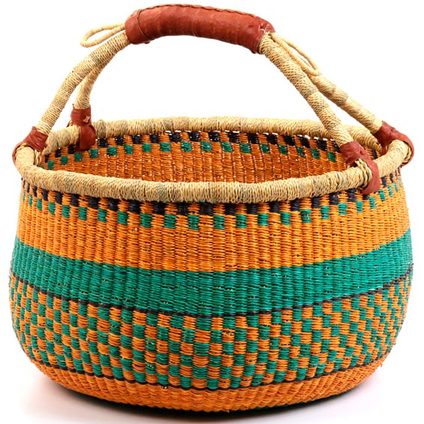Jan 25, 2016
Bolga Crafts
Bolgatanga is the regional capital of Ghana's Upper East Region. Bolgatanga is known as the crafts center of northern Ghana, with a large central market. Basket, farming, leather works and textile weaving have been some of the key crafts and activities for the development of the skills and knowledge of the people of this region over the years.
Basket weaving is done with grass straw. Veta vera grass straw is collected from the tops of the stalk, then each piece is split in half vertically by biting through it. Each half of the split straw is then twisted tightly by rolling it against a weaver's leg to give it strength. The straw is put in bunches and dyed in boiling water with the dye added. For bright colours the straw is dyed yellow first, then the colour.
Basket weaving tends to be female dominated in northern Ghana while it is male dominated in southern Ghana. Basket weaving around Bolgatanga in Upper East Region serves as an example of the craft skills of women in the north. Bolgatanga is the capital of the Upper East region of Ghana and sits between Burkina Faso (about 28 miles to the north) and Togo (about 19 miles to the east. Historically, this town of about 50,000 is very close in proximity to where the ancient Trans-Saharan trade routes converged with the Sahelian routes from Mali via Burkina Faso. This route has long been known for outstanding handicrafts - especially straw baskets, hats and fans, as well as leather goods and metal jewelry.
Click here to visit gallery

